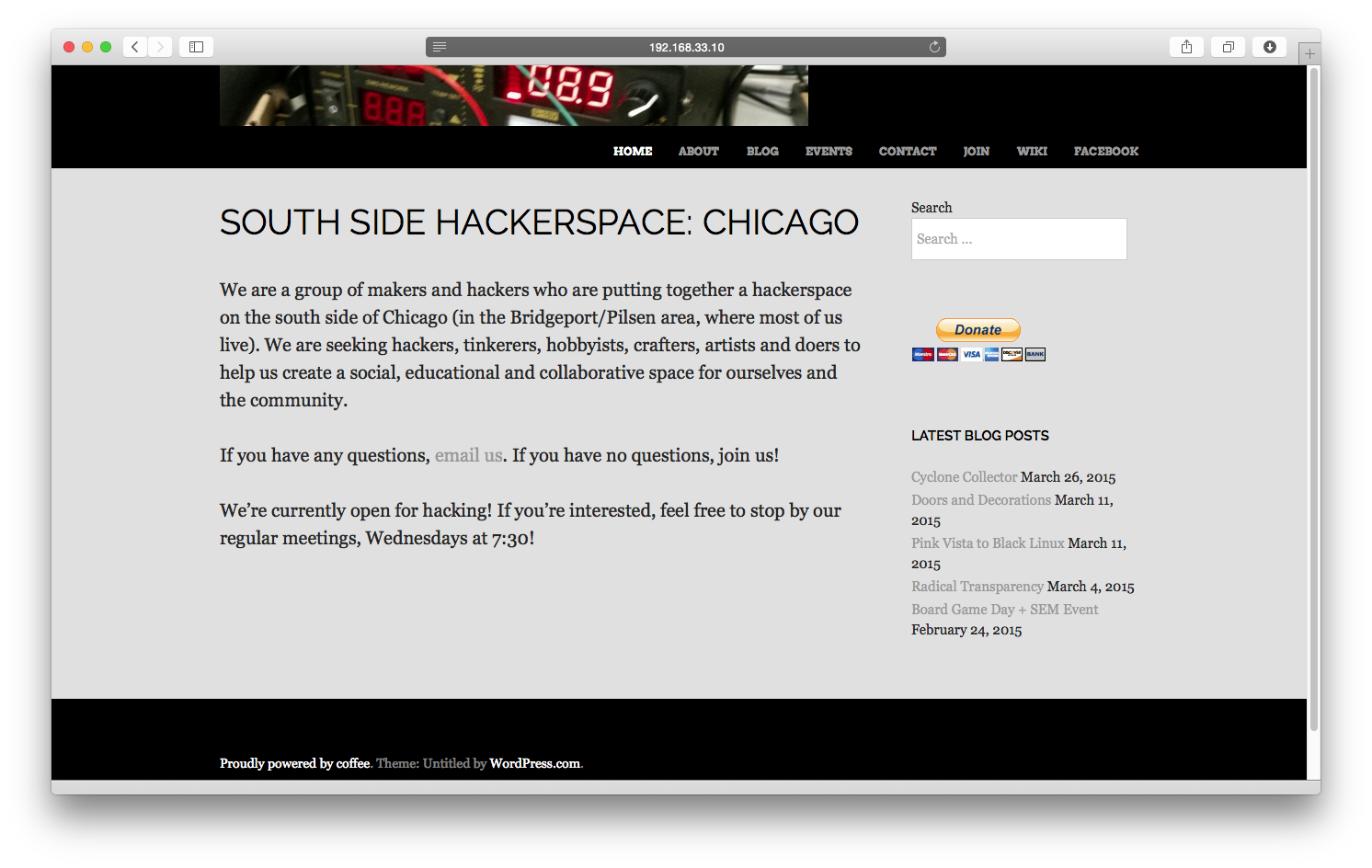Developing our WordPress Theme
Contents
Fun with WordPress Theme Development
This is a quick howto to get started with developing a wordpress theme using Vagrant
Install prerequisites
You'll need all of these:
- VirtualBox - https://www.virtualbox.org/wiki/Downloads
- The Oracle VM VirtualBox Extension Pack - https://www.virtualbox.org/wiki/Downloads
- Vagrant - http://www.vagrantup.com/downloads.html
If you're on a non-Unix workalike, you'll probably also want an SSH client, though it's not strictly necessary.
Install VCCW
Just follow the instructions under "Getting Started" at http://vccw.cc
Once it's set up, you should be able to hit http://192.168.33.10 to bring up a local wordpress instance. Hit http://192.168.33.10/wp-admin and log in with admin/admin to get to the admin panel!
Check out our WordPress theme
In the unpacked directory from VCCW, switch to the directory /www/wordpress/wp-content/themes.
Then, just clone our fork of the Untitled theme:
https://github.com/sshchicago/untitled
Make changes, test locally, and commit them back.
Any changes you make in that repo will automatically be reflected in the Wordpress VM - you don't even need to SSH in! Nifty!
Easy!
Get a copy of our production site
There's a script set up that can copy over a good amount of our production site that allows you to set things up on your local dev instance so it looks similar to what we've got in production.
In short:
- Follow the steps above to set up VCCW, and check out our theme.
- Check out https://github.com/cswingler/sshc-sitedevesetup into root of your vccw instance (either /vagrant within the VM, or vccw/ on your host machine - that directory is r/w share with the Vagrant VM)
- Log into the vm with
vagrant ssh
- Once you're in the VM, run:
cd vagrant//sshc-sitedevesetup bash ./sshc-vccw-setup.sh
That will barf a good amount of text, but once that's done, navigate to http://192.168.33.10 or http://wordpress.local:
Nifty!
TODO
- Set up Jenkins job to create tarballs of all of our existing assets/db dump
- Automate deployments from our github repo up to test
- Get test set up!
